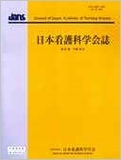Japanese
English
- 販売していません
- Abstract 文献概要
- 参考文献 Reference
要旨
目的:精神科救急病棟への非自発的入院初期の看護援助に対する認識を看護師,患者の視点から明らかにする.
方法:看護師,患者に半構造化面接を行い,質的統合法(KJ法)を用いて分析した.面接は,入院初期の参加観察を参考にした.
結果:対象は,看護師,患者,各5人であった.看護師の認識は9枚のラベルに分類され,【暴力につながり得るリスクの排除】の一方,【意に反した中でなんとか行う患者の意に沿う援助】といった論理構造となった.患者の認識は6枚のラベルに分類され,【入院時の理不尽な対応への怒りとあきらめ】の一方,【治療の受け入れにつながる患者の立場に立った関わり】といった論理構造となった.
結論:看護師,患者とも,看護援助に対し,強制的な治療遂行の一方,主体性の支持という2つの側面があると認識していた.患者の意に反した治療の遂行は,必要な治療でも,患者に強制力を認識させる.一方,主体性の支持は,治療を安全に行いつつ,患者の強制力の認識を減らすと考えられ,入院初期から意識すべき側面といえよう.
Aim: This study aimed to reveal nurses' and patients' perceptions of nursing care provision during the initial phase of involuntary admission to an emergency psychiatric hospital.
Methods: Nursing staff and patients were interviewed based on the authors' observation at the time of involuntary admission. Data were qualitatively analyzed according to the qualitative synthesis method (KJ method).
Results: Five nurses and five patients were interviewed. The nurses' perceptions were divided into nine categories, and had a conflicted logical structure; for example “trying to remove the risk of violence,” and the other hand “making efforts to care according to patients' wishes in cases of involuntary admission.” Patients' perceptions were divided into six categories, had a conflicted logical structure; for example “anger and resignation to the irrational way of compulsory admissions” and the other hand “involvement from patient position that lead to treatment acceptance.”
Conclusions: These results indicate that both nurses' and patients' perceptions were conflicted with regard to two aspects of implementing compulsory treatment and supporting patients' autonomy. Involuntary treatment might make patients perceive coercion even when the treatment is required. However, this study suggests that supporting patients' autonomy may allow treatment to be performed safely and may also reduce patients' perceived coercion. Therefore, patient autonomy needs to be considered from the initial phase of involuntary admission.
Copyright © 2017, Japan Academy of Nursing Science. All rights reserved.


